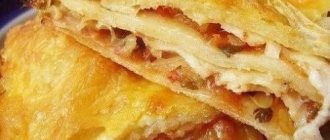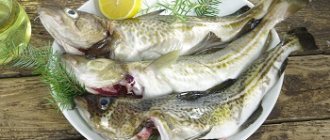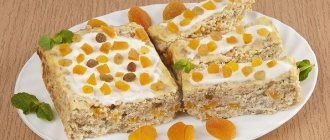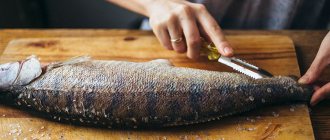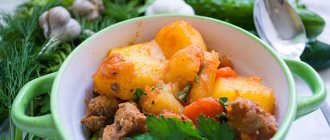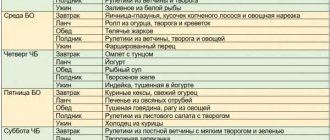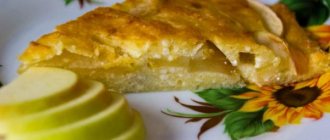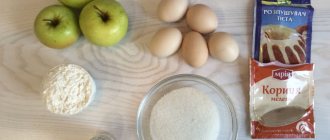Step-by-step recipe for making classic lasagna
Lasagna is a traditional dish of Italian cuisine that has won the hearts of gourmets around the world. It has a rich taste, a high level of satiety and an equally high calorie content. There are more than 600 kcal per 100 grams of product.
Cooking classic lasagna does not require any special skills. Even a culinary novice can please loved ones with this dish.
Required:
- Olive oil – 15 ml.
- Minced meat – 600 gr.
- Onion – 1 pc.
- Garlic – 2 cloves.
- Tomato puree – 120 gr.
- Carrot – 1 pc.
- Tomatoes – 2 pcs.
- Lasagna dough – 12 sheets.
- Cheese (ricotta or parmesan) – 300 gr.
- A mixture of dry spices and herbs.
Bechamel sauce is prepared separately. For it you will need:
- Butter – 80 gr.
- Flour – 22 gr.
- Milk – 1 l.
- Grated nutmeg – ⅓ teaspoon.
- Spices.
Step-by-step instruction:
- Chop the onion, tomatoes and garlic.
- Pass carrots and cheese through a grater.
- Fry the onions and carrots, after 3 minutes mince and spices. Simmer the mixture for 12 minutes.
- Place the puree, chopped tomatoes, and garlic cloves into the frying pan and simmer for another quarter of an hour until all the ingredients soften.
- Prepare the sauce: melt the butter, add flour and cook until golden brown. Boil milk with a pinch of nutmeg. After steeping for 8 minutes, pour milk into the butter-flour mixture in a thin stream and, stirring slowly, simmer until thickened, without letting it boil. At the end, add spices.
- Grease the prepared pan with butter and sauce, lay layers of dough, on top of which carefully place the meat and vegetable mixture and pour Bechamel sauce over everything. Sprinkle with cheese.
- Lay in layers until ingredients run out.
- Spread the top layer with sauce and generously sprinkle with cheese.
- Keep in the oven at 180°C for 45 minutes.
Before serving, let the lasagne “rest” for a quarter of an hour, then cut into pieces and start eating.
Be sure to check out: Diet cabbage salad: the best recipes Safe cleansing: flax seeds for weight loss Kefir on a diet: are alternatives possible Proper castling: how to replace high-calorie treats and allergenic foods on a diet
Lasagne recipe. Calorie, chemical composition and nutritional value.
Nutritional value and chemical composition of "Lasagna".
The table shows the nutritional content (calories, proteins, fats, carbohydrates, vitamins and minerals) per 100 grams of edible portion.
| Nutrient | Quantity | Norm** | % of the norm in 100 g | % of the norm in 100 kcal | 100% normal |
| Calorie content | 159.4 kcal | 1684 kcal | 9.5% | 6% | 1056 g |
| Squirrels | 10.2 g | 76 g | 13.4% | 8.4% | 745 g |
| Fats | 8.2 g | 56 g | 14.6% | 9.2% | 683 g |
| Carbohydrates | 10.8 g | 219 g | 4.9% | 3.1% | 2028 |
| Organic acids | 0.5 g | ~ | |||
| Alimentary fiber | 1 g | 20 g | 5% | 3.1% | 2000 g |
| Water | 66.4 g | 2273 g | 2.9% | 1.8% | 3423 g |
| Ash | 1.885 g | ~ | |||
| Vitamins | |||||
| Vitamin A, RE | 176.3 mcg | 900 mcg | 19.6% | 12.3% | 510 g |
| Retinol | 0.051 mg | ~ | |||
| beta carotene | 0.754 mg | 5 mg | 15.1% | 9.5% | 663 g |
| Vitamin B1, thiamine | 0.092 mg | 1.5 mg | 6.1% | 3.8% | 1630 g |
| Vitamin B2, riboflavin | 0.228 mg | 1.8 mg | 12.7% | 8% | 789 g |
| Vitamin B4, choline | 31.3 mg | 500 mg | 6.3% | 4% | 1597 g |
| Vitamin B5, pantothenic | 0.854 mg | 5 mg | 17.1% | 10.7% | 585 g |
| Vitamin B6, pyridoxine | 0.166 mg | 2 mg | 8.3% | 5.2% | 1205 g |
| Vitamin B9, folates | 16.174 mcg | 400 mcg | 4% | 2.5% | 2473 g |
| Vitamin B12, cobalamin | 0.432 mcg | 3 mcg | 14.4% | 9% | 694 g |
| Vitamin C, ascorbic acid | 2.74 mg | 90 mg | 3% | 1.9% | 3285 g |
| Vitamin D, calciferol | 0.187 mcg | 10 mcg | 1.9% | 1.2% | 5348 g |
| Vitamin E, alpha tocopherol, TE | 0.439 mg | 15 mg | 2.9% | 1.8% | 3417 g |
| gamma tocopherol | 0.034 mg | ~ | |||
| delta tocopherol | 0.006 mg | ~ | |||
| Vitamin H, biotin | 4.848 mcg | 50 mcg | 9.7% | 6.1% | 1031 g |
| Vitamin K, phylloquinone | 2.1 mcg | 120 mcg | 1.8% | 1.1% | 5714 g |
| Vitamin RR, NE | 4.091 mg | 20 mg | 20.5% | 12.9% | 489 g |
| Niacin | 1.587 mg | ~ | |||
| Betaine | 1.528 mg | ~ | |||
| Macronutrients | |||||
| Potassium, K | 319.52 mg | 2500 mg | 12.8% | 8% | 782 g |
| Calcium, Ca | 163.91 mg | 1000 mg | 16.4% | 10.3% | 610 g |
| Silicon, Si | 3.168 mg | 30 mg | 10.6% | 6.6% | 947 g |
| Magnesium, Mg | 23.71 mg | 400 mg | 5.9% | 3.7% | 1687 g |
| Sodium, Na | 307.1 mg | 1300 mg | 23.6% | 14.8% | 423 g |
| Sera, S | 95.8 mg | 1000 mg | 9.6% | 6% | 1044 g |
| Phosphorus, P | 177.1 mg | 800 mg | 22.1% | 13.9% | 452 g |
| Chlorine, Cl | 485.48 mg | 2300 mg | 21.1% | 13.2% | 474 g |
| Microelements | |||||
| Aluminium, Al | 151.6 mcg | ~ | |||
| Bor, B | 38.2 mcg | ~ | |||
| Vanadium, V | 16.57 mcg | ~ | |||
| Iron, Fe | 0.896 mg | 18 mg | 5% | 3.1% | 2009 |
| Yod, I | 5.98 mcg | 150 mcg | 4% | 2.5% | 2508 g |
| Cobalt, Co | 4.681 mcg | 10 mcg | 46.8% | 29.4% | 214 g |
| Lithium, Li | 2.797 mcg | ~ | |||
| Manganese, Mn | 0.2171 mg | 2 mg | 10.9% | 6.8% | 921 g |
| Copper, Cu | 180.72 mcg | 1000 mcg | 18.1% | 11.4% | 553 g |
| Molybdenum, Mo | 5.355 mcg | 70 mcg | 7.7% | 4.8% | 1307 g |
| Nickel, Ni | 1.513 mcg | ~ | |||
| Tin, Sn | 1.94 mcg | ~ | |||
| Rubidium, Rb | 43.6 mcg | ~ | |||
| Selenium, Se | 11.583 mcg | 55 mcg | 21.1% | 13.2% | 475 g |
| Strontium, Sr | 6.83 mcg | ~ | |||
| Titanium, Ti | 13.01 mcg | ~ | |||
| Fluorine, F | 14.28 mcg | 4000 mcg | 0.4% | 0.3% | 28011 g |
| Chromium, Cr | 4.25 mcg | 50 mcg | 8.5% | 5.3% | 1176 g |
| Zinc, Zn | 1.16 mg | 12 mg | 9.7% | 6.1% | 1034 g |
| Zirconium, Zr | 0.38 mcg | ~ | |||
| Digestible carbohydrates | |||||
| Starch and dextrins | 8.7 g | ~ | |||
| Mono- and disaccharides (sugars) | 2 g | max 100 g | |||
| Galactose | 0.008 g | ~ | |||
| Glucose (dextrose) | 0.231 g | ~ | |||
| Lactose | 0.635 g | ~ | |||
| Sucrose | 0.595 g | ~ | |||
| Fructose | 0.131 g | ~ | |||
| Essential amino acids | 1.606 g | ~ | |||
| Arginine* | 0.366 g | ~ | |||
| Valin | 0.468 g | ~ | |||
| Histidine* | 0.356 g | ~ | |||
| Isoleucine | 0.342 g | ~ | |||
| Leucine | 0.624 g | ~ | |||
| Lysine | 0.58 g | ~ | |||
| Methionine | 0.187 g | ~ | |||
| Methionine + Cysteine | 0.137 g | ~ | |||
| Threonine | 0.316 g | ~ | |||
| Tryptophan | 0.142 g | ~ | |||
| Phenylalanine | 0.356 g | ~ | |||
| Phenylalanine+Tyrosine | 0.463 g | ~ | |||
| Nonessential amino acids | 2.621 g | ~ | |||
| Alanin | 0.314 g | ~ | |||
| Aspartic acid | 0.58 g | ~ | |||
| Hydroxyproline | 0.019 g | ~ | |||
| Glycine | 0.24 g | ~ | |||
| Glutamic acid | 1.371 g | ~ | |||
| Proline | 0.551 g | ~ | |||
| Serin | 0.367 g | ~ | |||
| Tyrosine | 0.362 g | ~ | |||
| Cysteine | 0.076 g | ~ | |||
| Sterols (sterols) | |||||
| Cholesterol | 35.56 mg | max 300 mg | |||
| Fatty acid | |||||
| Trans fats | 0.013 g | max 1.9 g | |||
| monounsaturated trans fats | 0.008 g | ~ | |||
| Saturated fatty acids | |||||
| Saturated fatty acids | 3.9 g | max 18.7 g | |||
| 4:0 Oil | 0.054 g | ~ | |||
| 6:0 Kapronovaya | 0.048 g | ~ | |||
| 8:0 Caprylic | 0.078 g | ~ | |||
| 10:0 Kaprinovaya | 0.232 g | ~ | |||
| 12:0 Lauric | 0.219 g | ~ | |||
| 14:0 Miristinovaya | 0.645 g | ~ | |||
| 15:0 Pentadecane | 0.065 g | ~ | |||
| 16:0 Palmitinaya | 1.655 g | ~ | |||
| 17:0 Margarine | 0.041 g | ~ | |||
| 18:0 Stearic | 0.796 g | ~ | |||
| 20:0 Arakhinovaya | 0.047 g | ~ | |||
| Monounsaturated fatty acids | 2.419 g | min 16.8 g | 14.4% | 9% | |
| 14:1 Myristoleic | 0.087 g | ~ | |||
| 16:1 Palmitoleic | 0.243 g | ~ | |||
| 18:1 Oleic (omega-9) | 2.057 g | ~ | |||
| 18:1 cis | 0.594 g | ~ | |||
| 18:1 trans | 0.008 g | ~ | |||
| 20:1 Gadoleic (omega-9) | 0.008 g | ~ | |||
| Polyunsaturated fatty acids | 0.589 g | from 11.2 to 20.6 g | 5.3% | 3.3% | |
| 18:2 Linolevaya | 0.521 g | ~ | |||
| 18:2 Omega-6, cis, cis | 0.259 g | ~ | |||
| 18:2 trance, trance | 0.004 g | ~ | |||
| 18:3 Linolenic | 0.028 g | ~ | |||
| 18:3 Omega-3, alpha-linolenic | 0.011 g | ~ | |||
| 18:3 Omega-6, gamma-linolenic | 0.003 g | ~ | |||
| 20:2 Eicosadiene, Omega-6, cis, cis | 0.002 g | ~ | |||
| 20:4 Arachidonic | 0.042 g | ~ | |||
| 20:5 Eicosapentaenoic acid (EPA), Omega-3 | 0.002 g | ~ | |||
| 22:5 Docosapentaenoic acid (DPA), Omega-3 | 0.002 g | ~ | |||
| 22:6 Docosahexaenoic acid (DHA), Omega-3 | 0.005 g | ~ | |||
| Omega-6 fatty acids | 0.6 g | from 4.7 to 16.8 g | 12.8% | 8% |
The energy value of Lasagne is 159.4 kcal.
- Serving = 315 g (502.1 kcal)
Primary Source: Created in the application by the user. Read more.
** This table shows the average levels of vitamins and minerals for an adult. If you want to know the norms taking into account your gender, age and other factors, then use the “My Healthy Diet” application.
How to make your own pasta for a dish
Not everyone has the opportunity to buy ready-made sheets of lasagna dough. If they are not available in the store, you can prepare the main component of an Italian dish at home.
Required:
- Flour – 400 gr.
- Large eggs – 4 pcs.
Step-by-step instruction:
- Sift the flour, make a well in the center of the mound and crack the eggs into it.
- Lightly add salt and gently knead the dough.
- Divide the dough into 10 parts and roll each into a layer 1-1.5 mm thick.
- Boil the leaves in slightly salted boiling water for 8-10 minutes, then use them to prepare a dish.
You can save cooking time by using a food processor to knead the dough.
Interesting! The resulting preparations are stored in the freezer for several months.
Classic lasagna
Recipe for making classic lasagna Finely chop the onions, cut the tomatoes into pieces, grate the cheese and carrots, chop the garlic. Heat vegetable oil in a deep frying pan and fry the onion until golden brown. As soon as the onion is fried, add carrots to it and fry for 5 minutes. Then add minced meat, spices for minced meat, mix well and fry over low heat for another 10 minutes. Next, add tomato puree, tomatoes, garlic, cook for another 10 minutes, salt and pepper to taste. Prepare Bechamel sauce. In another frying pan or saucepan, melt the butter. Add flour and fry for 5 minutes until golden brown, constantly stirring the resulting lumps. Separately, boil the milk, add a pinch of nutmeg and bay leaf. Let it brew for 10 minutes and remove the bay leaf. Add milk to the flour, pouring it in a thin stream so that no lumps form, and cook, stirring constantly with a whisk, until the sauce thickens. We don't let it boil. At the very end, bring almost to a boil and remove from heat. Lightly salt and pepper. Pour a little Bechamel sauce onto the bottom of the baking dish, greased with vegetable oil, and place the prepared lasagne sheets; This recipe does not require cooking, so we just put it in. Place the meat filling on top of the dough, generously pour bechamel sauce on top and sprinkle with grated cheese. Repeat layers until all ingredients are used. Lasagna sheets, step-by-step preparation of lasagna After the cheese, lay out a layer of dough, pour over Bechamel sauce, sprinkle with grated cheese and bake for 40 minutes in a hot oven (200 ° C) until golden brown. Remove the finished lasagna from the oven, let stand for 10 minutes, and then cut into portions. Bon appetit! PS If you can’t buy ready-made lasagne sheets in the store, you can make it yourself. To do this, sift 400 g of flour through a sieve so that you get a slide. Then we make a recess in the center of this slide, into which we drive 5 large eggs, add salt to taste and knead the dough. It's even easier to do this in a food processor. Roll it into a ball and send it closer to the heat for about twenty minutes. Then we divide it into nine parts and roll each part into a thin layer no more than 1.5 mm thick. Boil the layers in boiling salted water for ten minutes. Store the prepared dough strips in the freezer.
What sauces are suitable for weight loss
Sauce is one of the highest calorie ingredients in an Italian dish. By reducing its calorie content, you can significantly reduce the overall energy value of lasagna. An alternative to “Béchamel” can be sauces based on skim milk and kefir.
In the first case, 40 grams of corn starch must be dissolved in 500 ml of skim milk, then put the mixture to simmer over low heat. After thickening the sauce, add the necessary seasonings and a pinch of nutmeg.
The second option involves simply mixing kefir and sour cream with a fat content of no more than 15%. To enrich the taste, favorite spices and herbs are added to the resulting sauce.
Optimal filling ingredients
The classic lasagna filling is a mixture of several types of minced meat. Most often it is beef and pork. However, in the case of a diet, it is better to give up high-calorie types of meat and switch to lighter varieties: turkey, chicken, rabbit.
Lasagna is highly variable. Mushrooms, low-fat fish, seafood, cottage cheese, lentils, asparagus and other types of vegetables can serve as dietary ingredients analogous to minced meat.
Low-calorie recipe options
Low-calorie versions of lasagna are not much inferior to the original in terms of taste.
With Chiken
Chicken lasagna is one of the most common dietary options:
- Lasagna sheets – 18 pcs.
- Minced chicken – 800 gr.
- Tomatoes – 800-900 gr.
- Onion – 1 pc.
- Carrots – 1 pc.
- Cheese (mozzarella or suluguni) – 200 gr.
Step-by-step instruction:
- Chop the onion and place it in the prepared frying pan.
- After 3 minutes, add carrots, minced meat and chopped tomatoes.
- If desired, enhance the taste with chopped herbs and garlic.
- Grease the pan with oil and place the sheets of dough overlapping each other.
- Alternate layers with meat filling.
- Sprinkle the last layer of minced meat with grated mozzarella.
- Bake for ¾ hours at 180-185°C.
With minced meat
- Dough layers – 8 pcs.
- Minced meat (chicken, rabbit or turkey) – 350 gr.
- Onion – 1 pc.
- Carrots – 1 pc.
- Celery – 1 pc.
- Tomatoes – 2 pcs.
- Tomato puree – 40 gr.
- Garlic – 3 cloves.
- Kefir 1% – 350 ml.
- Suluguni – 130 gr.
- Spices and seasonings.
Step-by-step instruction:
- Chop the onions and tomatoes, grate the carrots, finely chop the celery.
- Place vegetables in a preheated frying pan and after 3 minutes add minced meat.
- Grate the garlic and mix it with tomato puree and kefir.
- Prepare a baking dish, place the kefir-tomato mixture on the bottom, then the dough sheets and minced meat, pour the sauce over everything again.
- Repeat layers 3-4 times.
- Grease the top layer with sauce, sprinkle with suluguni and place in the oven for 40-45 minutes (170-180°C).
With lavash
Classic lavash made from unleavened dough will help you save money and time.
- Minced turkey – 600 gr.
- Lavash – 1 pc.
- Carrots – 1 pc.
- Onion – 1 pc.
- Garlic – 2 cloves.
- Tomatoes – 2 pcs.
- Sour cream 10% – 300 gr.
- Kefir 1% – 20 ml.
- Homemade cheese – 120 gr.
Step-by-step instruction:
- Fry the chopped onion and carrots, add minced meat, finely chopped tomatoes and simmer the filling for at least 10-12 minutes.
- Mix sour cream and kefir, add spices, seasonings and grated garlic.
- Cut the pita bread into layers of the desired size.
- Place sour cream and kefir sauce on the bottom of the mold, top it with lavash sheets, then the meat filling and the sauce again.
- Alternate layers until the prepared products run out.
- Pour sour cream mixture over everything and sprinkle with grated homemade cheese.
Bake in an oven preheated to 185°C for a quarter of an hour.
Vegetable
Vegetable or vegetarian lasagna is a hit both on and off the diet.
- Ready-made lasagna dough – 500 gr.
- Eggplant – 2 pcs.
- Large zucchini – 1 pc.
- Onion – 2 pcs.
- Carrots – 1 pc.
- Sweet pepper – 5 pcs.
- Low fat hard cheese – 300 gr.
- Tomatoes – 900 gr.
- Spices (mixed peppers, coriander, basil, rosemary).
Step-by-step instruction:
- Peel the eggplants, chop into cubes, add plenty of salt and cover with cold water.
- Chop the zucchini and onion, grate the carrots. Cut the sweet pepper into thin strips.
- Drain the water from the eggplants, heat the frying pan and add onions, carrots, peppers, eggplants and zucchini one by one.
- Simmer until the vegetables are soft, then add the tomatoes chopped in a blender into the filling. Add spices and herbs.
- Place the vegetable mixture in a greased form, then the dough, again the filling and grated cheese.
- Repeat layers 3-4 times.
- Finish the top layer with mixture and cheese.
- Cover the pan with foil and cook for 15-17 minutes at 195°C.
Without flour
You can further reduce the calorie content by removing the dough from the recipe and replacing it with cabbage leaves.
- Cabbage leaves 10-12 pcs.
- Minced chicken – 450 gr.
- Onion – 1 pc.
- Carrot – 1 pc.
- Sweet pepper – 1 pc.
- Tomatoes – 2 pcs.
- Sour cream 15% – 250 gr.
- Kefir 1% – 250 ml
- Low-fat Gaudette cheese – 120 gr.
Step-by-step instruction:
- Chop the onions and peppers, grate the carrots.
- Simmer cabbage leaves in boiling water.
- Fry the vegetables, adding minced meat and tomatoes crushed in a blender after 5 minutes. Simmer for 10 minutes.
- Mix kefir and sour cream. Add salt and seasonings.
- Place white sauce in the pan, then cabbage leaves, meat filling and grated cheese.
- Repeat layers 4 times.
- Pour the last layer of minced meat with kefir-sour cream mixture and sprinkle with gaudette.
Bake lasagna without dough for 10-15 minutes at 185°C.
In a slow cooker
A multicooker can significantly reduce time and make the cooking process easier.
- Dough sheets – 9 pcs.
- Sour cream 10% –100 gr.
- Kefir 1% – 100 gr.
- Champignons – 350 gr.
- Onion – 1 pc.
- Carrots – 1 pc.
- Tomato – 1 pc.
- Sweet pepper – 1 pc.
- Suluguni – 100 gr.
Step-by-step instruction:
- Chop the mushrooms and vegetables and place them in the multicooker on the “Baking” mode.
- Place the vegetable mixture from the bowl of the device, dilute sour cream and kefir. Add spices and herbs.
- Pour a few spoons of sauce into the bottom of the bowl, line the bottom with 3 sheets of dough and add the mushroom and vegetable filling.
- Repeat the layers and pour the sour cream-kefir mixture over the entire dish.
- Leave on the “Baking” mode for 55 minutes.
- 7 minutes before readiness, sprinkle the top layer with grated homemade suluguni.
Serve the dish after it has cooled.
Recipe for Lasagne with minced meat. Calorie, chemical composition and nutritional value.
Nutritional value and chemical composition of “Lasagna with minced meat.”
The table shows the nutritional content (calories, proteins, fats, carbohydrates, vitamins and minerals) per 100 grams of edible portion.
| Nutrient | Quantity | Norm** | % of the norm in 100 g | % of the norm in 100 kcal | 100% normal |
| Calorie content | 152.3 kcal | 1684 kcal | 9% | 5.9% | 1106 g |
| Squirrels | 9.2 g | 76 g | 12.1% | 7.9% | 826 g |
| Fats | 7.7 g | 56 g | 13.8% | 9.1% | 727 g |
| Carbohydrates | 11.2 g | 219 g | 5.1% | 3.3% | 1955 |
| Alimentary fiber | 0.1 g | 20 g | 0.5% | 0.3% | 20000 g |
| Water | 71.4 g | 2273 g | 3.1% | 2% | 3183 g |
| Ash | 0.561 g | ~ | |||
| Vitamins | |||||
| Vitamin A, RE | 12.1 mcg | 900 mcg | 1.3% | 0.9% | 7438 g |
| Retinol | 0.01 mg | ~ | |||
| beta carotene | 0.008 mg | 5 mg | 0.2% | 0.1% | 62500 g |
| Vitamin B1, thiamine | 0.003 mg | 1.5 mg | 0.2% | 0.1% | 50000 g |
| Vitamin B2, riboflavin | 0.004 mg | 1.8 mg | 0.2% | 0.1% | 45000 g |
| Vitamin B4, choline | 1.18 mg | 500 mg | 0.2% | 0.1% | 42373 g |
| Vitamin B5, pantothenic | 0.006 mg | 5 mg | 0.1% | 0.1% | 83333 g |
| Vitamin B6, pyridoxine | 0.007 mg | 2 mg | 0.4% | 0.3% | 28571 g |
| Vitamin B9, folates | 0.389 mcg | 400 mcg | 0.1% | 0.1% | 102828 g |
| Vitamin B12, cobalamin | 0.004 mcg | 3 mcg | 0.1% | 0.1% | 75000 g |
| Vitamin C, ascorbic acid | 0.12 mg | 90 mg | 0.1% | 0.1% | 75000 g |
| Vitamin D, calciferol | 0.034 mcg | 10 mcg | 0.3% | 0.2% | 29412 g |
| Vitamin E, alpha tocopherol, TE | 0.044 mg | 15 mg | 0.3% | 0.2% | 34091 g |
| Vitamin H, biotin | 0.024 mcg | 50 mcg | 208333 g | ||
| Vitamin K, phylloquinone | 0.2 mcg | 120 mcg | 0.2% | 0.1% | 60000 g |
| Vitamin RR, NE | 0.0505 mg | 20 mg | 0.3% | 0.2% | 39604 g |
| Niacin | 0.018 mg | ~ | |||
| Betaine | 0.008 mg | ~ | |||
| Macronutrients | |||||
| Potassium, K | 9.54 mg | 2500 mg | 0.4% | 0.3% | 26205 g |
| Calcium, Ca | 6.12 mg | 1000 mg | 0.6% | 0.4% | 16340 g |
| Silicon, Si | 0.05 mg | 30 mg | 0.2% | 0.1% | 60000 g |
| Magnesium, Mg | 1.21 mg | 400 mg | 0.3% | 0.2% | 33058 g |
| Sodium, Na | 201.72 mg | 1300 mg | 15.5% | 10.2% | 644 g |
| Sera, S | 2.57 mg | 1000 mg | 0.3% | 0.2% | 38911 g |
| Phosphorus, P | 3.6 mg | 800 mg | 0.5% | 0.3% | 22222 g |
| Chlorine, Cl | 309.95 mg | 2300 mg | 13.5% | 8.9% | 742 g |
| Microelements | |||||
| Aluminium, Al | 13.1 mcg | ~ | |||
| Bor, B | 0.5 mcg | ~ | |||
| Vanadium, V | 1.12 mcg | ~ | |||
| Iron, Fe | 0.115 mg | 18 mg | 0.6% | 0.4% | 15652 g |
| Yod, I | 0.01 mcg | 150 mcg | 1500000 g | ||
| Cobalt, Co | 0.098 mcg | 10 mcg | 1% | 0.7% | 10204 g |
| Manganese, Mn | 0.0187 mg | 2 mg | 0.9% | 0.6% | 10695 g |
| Copper, Cu | 4.88 mcg | 1000 mcg | 0.5% | 0.3% | 20492 g |
| Molybdenum, Mo | 0.757 mcg | 70 mcg | 1.1% | 0.7% | 9247 g |
| Nickel, Ni | 0.027 mcg | ~ | |||
| Tin, Sn | 0.06 mcg | ~ | |||
| Selenium, Se | 0.124 mcg | 55 mcg | 0.2% | 0.1% | 44355 g |
| Titanium, Ti | 0.14 mcg | ~ | |||
| Fluorine, F | 2.3 mcg | 4000 mcg | 0.1% | 0.1% | 173913 g |
| Chromium, Cr | 0.03 mcg | 50 mcg | 0.1% | 0.1% | 166667 g |
| Zinc, Zn | 0.0253 mg | 12 mg | 0.2% | 0.1% | 47431 g |
| Digestible carbohydrates | |||||
| Starch and dextrins | 0.845 g | ~ | |||
| Sucrose | 0.003 g | ~ | |||
| Essential amino acids | 0.009 g | ~ | |||
| Arginine* | 0.005 g | ~ | |||
| Valin | 0.002 g | ~ | |||
| Histidine* | 0.001 g | ~ | |||
| Isoleucine | 0.002 g | ~ | |||
| Leucine | 0.003 g | ~ | |||
| Lysine | 0.002 g | ~ | |||
| Methionine | 0.001 g | ~ | |||
| Methionine + Cysteine | 0.001 g | ~ | |||
| Threonine | 0.002 g | ~ | |||
| Tryptophan | 0.001 g | ~ | |||
| Phenylalanine | 0.002 g | ~ | |||
| Phenylalanine+Tyrosine | 0.002 g | ~ | |||
| Nonessential amino acids | 0.012 g | ~ | |||
| Alanin | 0.002 g | ~ | |||
| Aspartic acid | 0.004 g | ~ | |||
| Glycine | 0.001 g | ~ | |||
| Glutamic acid | 0.008 g | ~ | |||
| Proline | 0.003 g | ~ | |||
| Serin | 0.002 g | ~ | |||
| Tyrosine | 0.002 g | ~ | |||
| Cysteine | 0.001 g | ~ | |||
| Sterols (sterols) | |||||
| Cholesterol | 4.41 mg | max 300 mg | |||
| Phytosterols | 0.089 mg | ~ | |||
| Saturated fatty acids | |||||
| Saturated fatty acids | 1.2 g | max 18.7 g | |||
| 4:0 Oil | 0.07 g | ~ | |||
| 6:0 Kapronovaya | 0.032 g | ~ | |||
| 8:0 Caprylic | 0.017 g | ~ | |||
| 10:0 Kaprinovaya | 0.039 g | ~ | |||
| 12:0 Lauric | 0.045 g | ~ | |||
| 14:0 Miristinovaya | 0.206 g | ~ | |||
| 16:0 Palmitinaya | 0.574 g | ~ | |||
| 18:0 Stearic | 0.18 g | ~ | |||
| Monounsaturated fatty acids | 0.573 g | min 16.8 g | 3.4% | 2.2% | |
| 14:1 Myristoleic | 0.04 g | ~ | |||
| 16:1 Palmitoleic | 0.06 g | ~ | |||
| 18:1 Oleic (omega-9) | 0.468 g | ~ | |||
| Polyunsaturated fatty acids | 0.06 g | from 11.2 to 20.6 g | 0.5% | 0.3% | |
| 18:2 Linolevaya | 0.027 g | ~ | |||
| 18:3 Linolenic | 0.002 g | ~ |
The energy value of Lasagne with minced meat is 152.3 kcal.
Primary Source: Created in the application by the user. Read more.
** This table shows the average levels of vitamins and minerals for an adult. If you want to know the norms taking into account your gender, age and other factors, then use the “My Healthy Diet” application.
Main conclusions
Low-calorie lasagna is a very realistic recipe that allows you to stick to your diet without denying yourself your favorite dish:
- You can reduce calorie content by replacing a number of ingredients.
- The filling of lasagna is very variable. It can be prepared from lean meats, fish, cottage cheese, zucchini, eggplants and a variety of vegetables.
- High-calorie “Béchamel” can be replaced with a simple sauce made from skim milk or kefir.
- By using cabbage leaves instead of dough, you can reduce the calorie content by more than 2.5 times.
Lasagna is prepared both in the oven and in a slow cooker. A variety of recipes allows you to find a composition that is ideal in terms of taste and calorie content.
Share your diet lasagna recipes and weight loss experiences with Italian cuisine in the comments.
